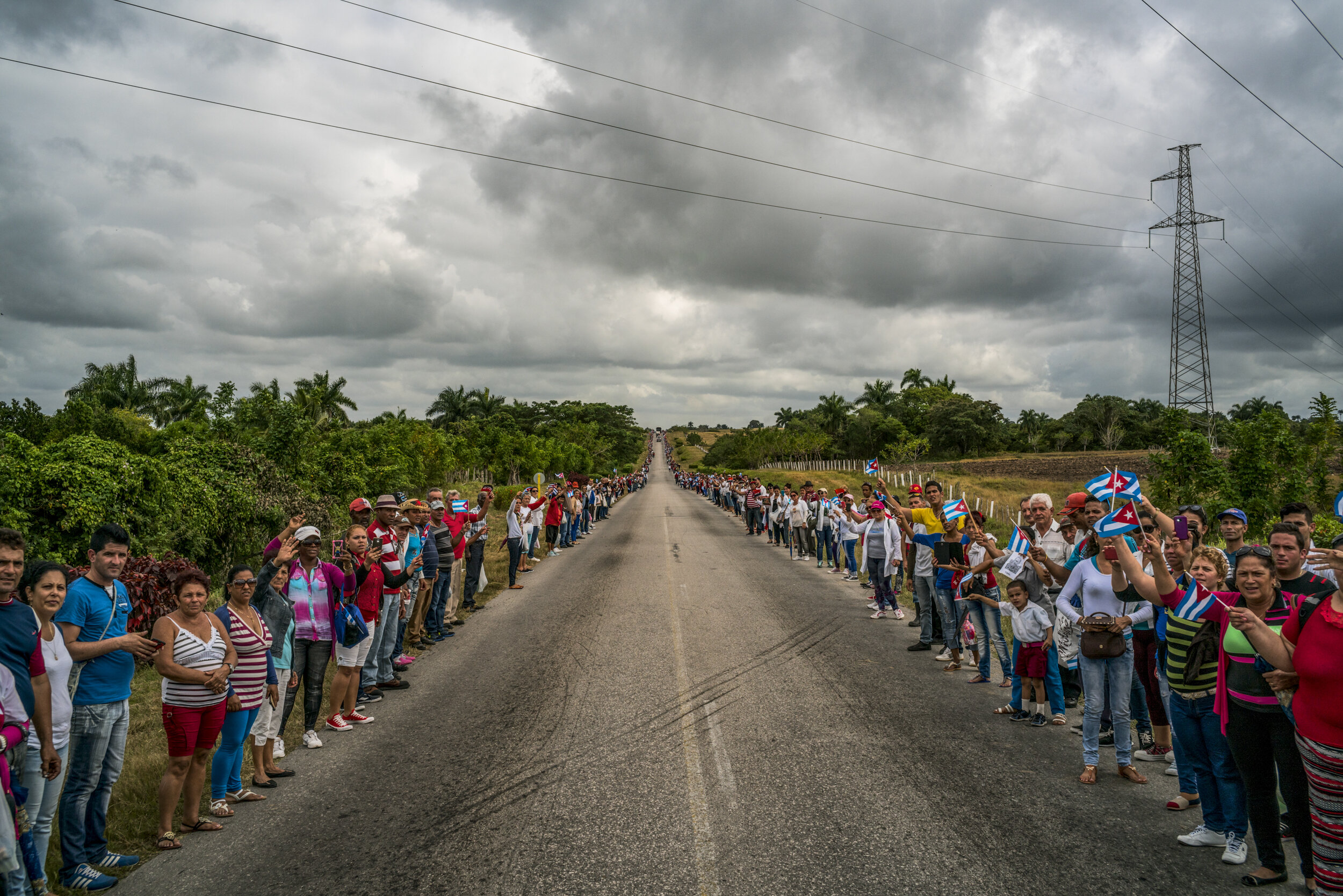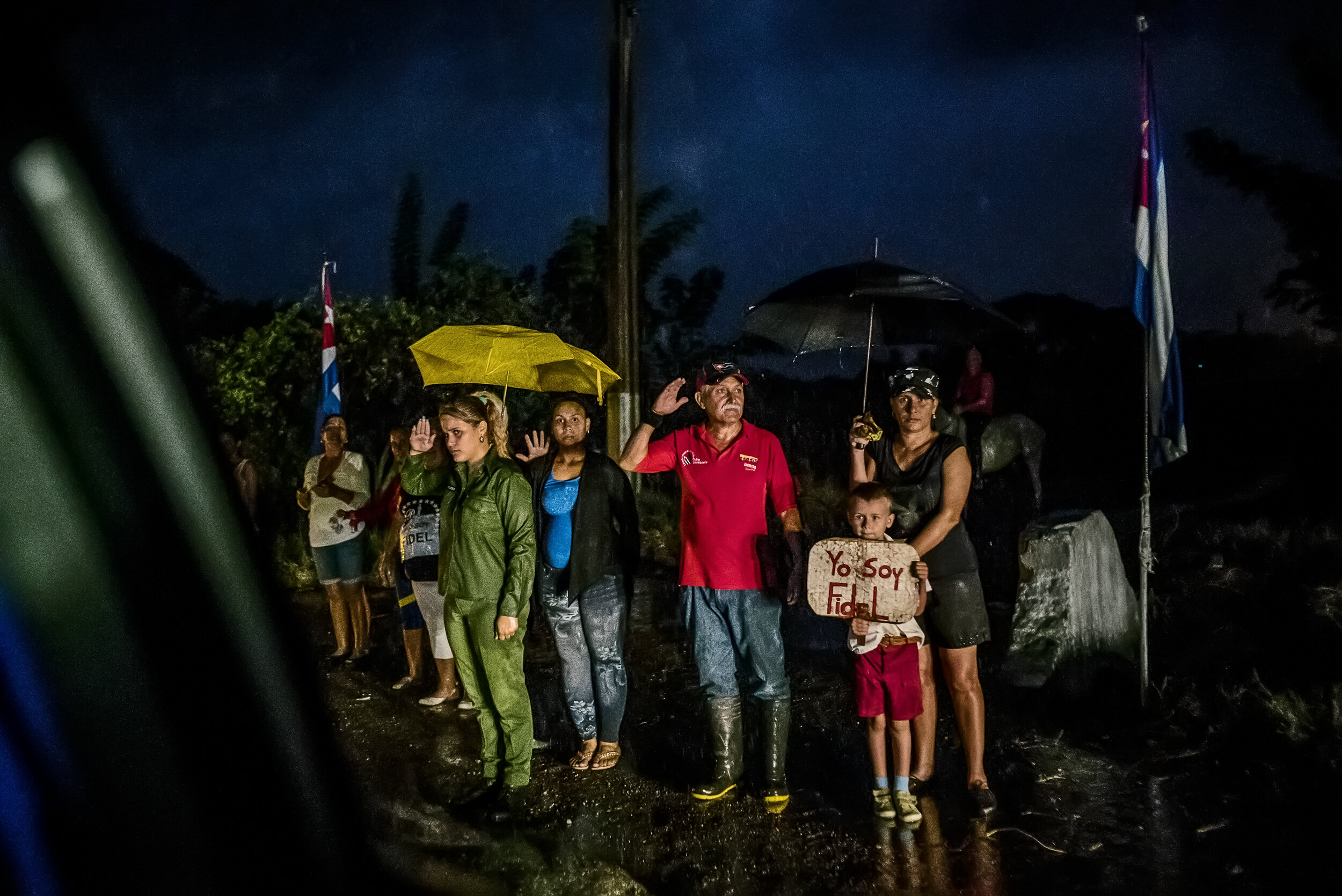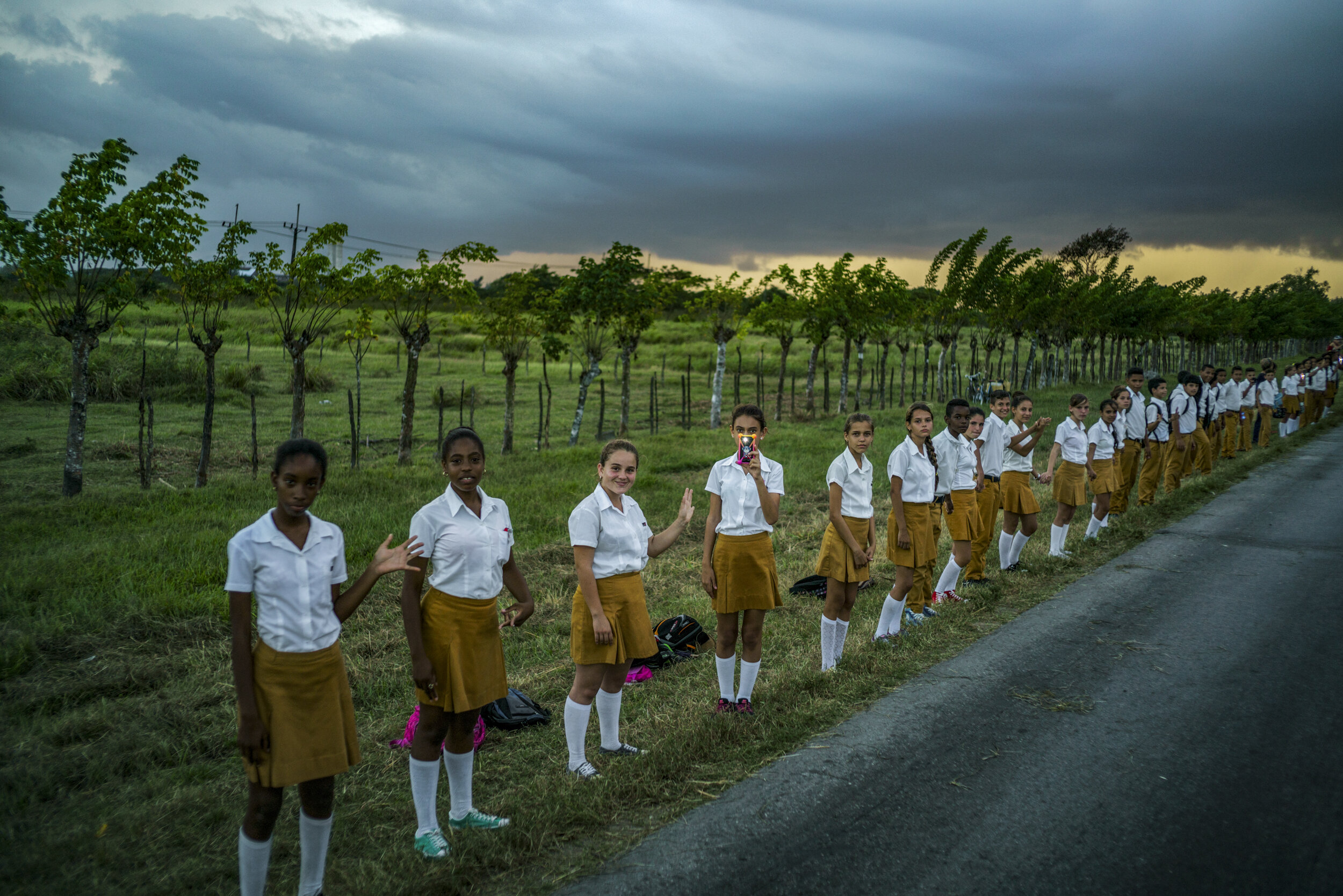Y O S O Y F I D E L
⌄
Yo Soy Fidel follows the cortège of Fidel Castro, former Cuban revolutionary and politician, over a period of several days in late 2016. American photographer Michael Christopher Brown leaned out of a rear passenger window of his passing vehicle in order to photograph Cubans waiting alongside the highway for Fidel's military convoy, carrying his cremated remains from Havana to Santiago, to pass. The route mirrored Fidel's post-revolution journey from Santiago to Havana in 1959, which helped solidify his image as hero and legend. In Yo Soy Fidel, fragments of this initial image have survived his death though perhaps inevitably lead to a question of what is to come. A country largely seen for half a century as a symbol of dignity and hope in the fight against imperialism, Cuba has a choice: to stay true to Fidel's revolutionary path or embrace globalization and all it entails.
⌄

“Along the thousand-kilometer route we saw few stretches of road that were without people. They had traveled from north and south to watch the caravan pass. Folks walked for miles or were carried in by trucks, buses, or horse carriages. To stand on remote stretches of road, often dozens of miles from then nearest town.“
MARTIN PARR
“Here it is; one of the most remarkable journeys of recent years. The book takes us on this extraordinary road trip and we share the excitement and emotions that Michael experienced as an unexpected part of it. While there are reminders of Paul Fusco’s classic Funeral Train, this feels different. When Michael’s car led the cortege, we see the road ahead pulling us forward, with the flag-bearing mourners waving, their faces brimming with anticipation and sorrow. Despite the ubiquity of Cuban imagery, this is one remarkable event that, I suspect, will became even more valuable as a record of Cuba than any number of photographs of vintage American cars and crumbling architecture.”
⌄

“As night fell, we passed through the rural parts of camaguey province. People stood out in the rain, some barefoot and most without umbrellas and cheering, saluting or patiently waiting. There were few street-lights, so to take my photographs, I relied on the headlights of taxis behind and in front of us. Now transporting journalists who had seen us pass by and also joined the caravan.“
JON LEE ANDERSON
“In Michael’s images, we see Cubans as they are, in the end, without Fidel, modest people of ordinary appearance in a mostly rural landscape, a Cuba largely unchanged in outward appearance since the days when he came through, promising revolution and a new future, as a young man of thirty-two.”
MOTION
Video by MCB

“But more often than not the people just watched us pass, standing patiently in silence. There was an ephemeral beauty about their stillness as well as kind of power, as if they not only waited for the caravan but also for their presence to be acknowledged, as if this was about them, not just Fidel.“
PRESS
—
RUMAAN ALAM OF THE NEW YORK TIMES
"An extraordinary portrait of a nation in mourning."
CORALIE KRAFT OF LENSCULTURE
“ The resulting collection of images is a potent and revealing portrait of a country that is in the process of redefining itself without its charismatic leader.”
⌄

“Sometimes those standing along the route seemed astonished or at least bewildered to see us, especially when ours was the only vehicle within miles of the convoy. "They probably think you are the most important photographer in the world to not only be on the route, but in front of the convoy, in front of Fidel!", my driver said.
LAURENCE CORNET OF ARLES VOIES OFF
“Cut off from the rest of the world as a consequence of Castro’s dire opposition to capitalism, Cuba remains a one-of-a-kind country, mainly talked about through stereotypes – from its old Chevrolet cars to its handmade cigars. At the opposite of fantasy, the photographs by Michael Christopher Brown of Fidel Castro’s funeral convoy draw a touching portrait of a people, torn between shock and hope, witnessing the most important event in their country’s recent history.”
⌄

DAMIANI EDITORE
FIRST EDITION
JUNE 2018
13.5 x 9.8 INCHES
160 PAGES
DESIGNED BY MCB & RAMON PEZ
ISBN-10: 8862086024
ISBN-13: 978-8862086028

